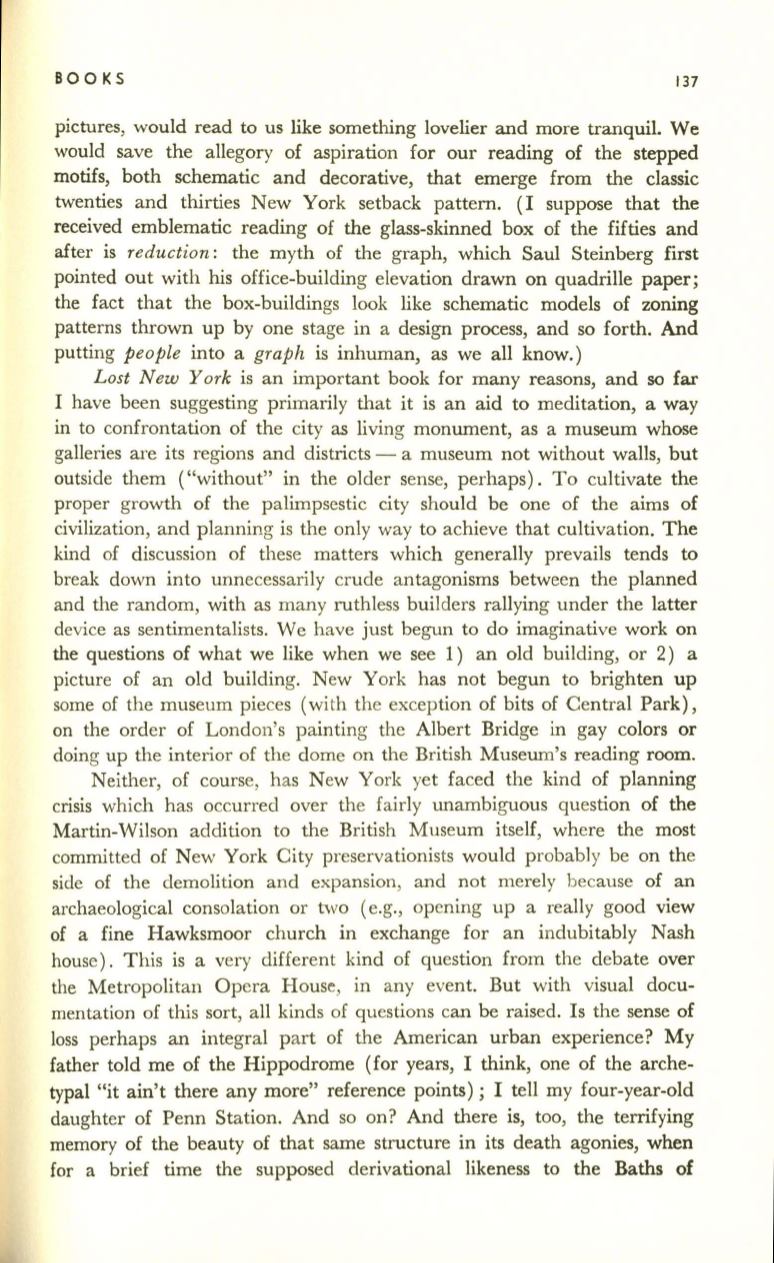
BOO KS
137
pictures, would read to us like something lovelier and more tranquil. We
would save the allegory of aspiration for our reading of the stepped
motifs, both schematic and decorative, that emerge from the classic
twenties and thirties New York setback pattern. (1 suppose that the
received emblematic reading of the glass-skinned box of the fifties and
after is
reduction:
the myth of the graph, which Saul Steinberg first
pointed out with his office-building elevation drawn on quadrille paper;
the fact that the box-buildings look like schematic models of zoning
patterns thrown up by one stage in a design process, and so forth. And
putting
people
into a
graph
is inhuman, as we all know.)
Lost New York
is an important book for many reasons, and so far
I have been suggesting primarily that it is an aid to meditation, a way
in to confrontation of the city as living monument, as a museum whose
galleries are its regions and districts - a museum not without walls, but
outside them ("without" in the older sense, perhaps). To cultivate the
proper growth of the palirnpsestic city should be one of the aims of
civilization, and planning is the only way to achieve that cultivation. The
kind of discussion of these matters which generally prevails tends to
break down into unnecessarily crude antagonisms between the planned
and the random, with as many ruthless builders rallying under the latter
device as sentimentalists. We have just begun to do imaginative work on
the questions of what we like when we see 1) an old building, or 2) a
picture of an old building. New York has not begun to brighten up
some of the museum pieces (with the exception of bits of Central Park),
on the order of London's painting the Albert Bridge in gay colors or
doing up the interior of the dome on the British Museum's reading room.
Neither, of course, has New York yet faced the kind of planning
crisis which has occurred over the fairly unambiguous question of the
Martin-Wilson addition to the British Museum itself, where the most
committed of New York City preservationists would probably be on the
side of the demolition and expansion, and not merely because of an
archaeological consolation or two (e.g., opening up a really good view
of a fine Hawksmoor church in exchange for an indubitably Nash
house). This is a very different kind of question from the debate over
the Metropolitan Opera House, in any event. But with visual docu–
mentation of this sort, all kinds of questions can be raised. Is the sense of
loss perhaps an integral part of the American urban experience? My
father told me of the Hippodrome (for years, 1 think, one of the arche–
typal "it ain't there any more" reference points); I tell my four-year-old
daughter of Penn Station. And so on? And there is, too, the terrifying
memory of the beauty of that same structure in its death agonies, when
for a brief time the supposed derivational likeness to the Baths of


